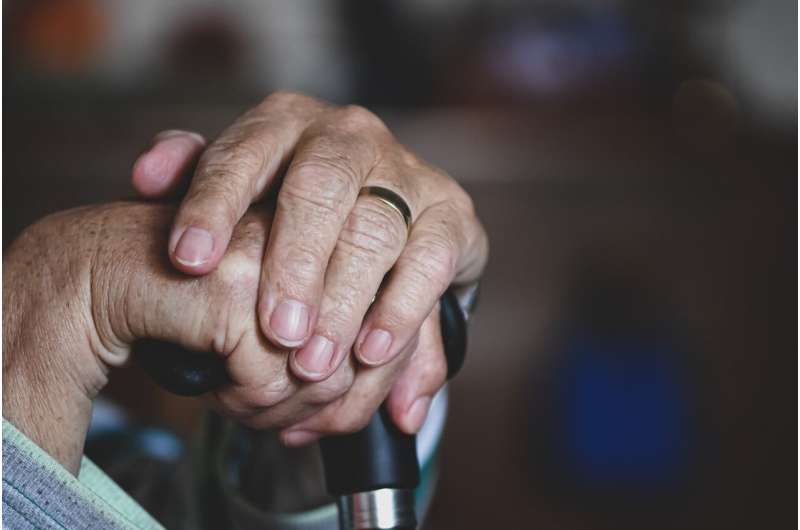This article has been reviewed according to Science X's editorial process and policies. Editors have highlighted the following attributes while ensuring the content's credibility:
fact-checked
trusted source
proofread
The impact of nurse practitioner placement in Japanese nursing homes

The global demographic shift marked by a decline in birth rates and an increase in aging populations has posed a significant strain on health care resources. Recognizing the need for better health care, researchers have proposed innovative measures, including the integration of nurses into roles traditionally held by physicians. Nurse practitioners (NPs) have emerged as a potential solution to optimize the allocation of limited medical resources, particularly in addressing primary care physician shortages.
In Japan, the development of the NP programs began in 2008, leading to the certification of 759 NPs as of 2023. Despite this progress, the utilization of NPs in specialized settings, such as nursing homes for older adults, remains underexplored. Previous research has mostly focused on NP skills, but there is a notable lack of studies exploring the actual effects of NP-led care in primary settings.
IN this setting, Dr. Nahoko Harada from Okayama University, worked with a team of researchers, consisting of Dr. Masahide Koda from the Co-learning Community Health care Re-innovation Office, Graduate School of Medicine, Dentistry and Pharmaceutical Sciences, Okayama University and Professor Miho Suzuki from the Faculty of Nursing and Medical Care, Keio University, published a study in The Journal for Nurse Practitioners on December 04, 2023, that aimed to identify the role of NPs in specialized nursing homes for older adults in Miyagi Prefecture, Japan.
"In the U.S., nurse practitioners (NPs) have expanded their role to provide quality health care, especially in regions facing physician shortages. As a researcher educated in NPs in the U.S., I wanted to find evidence regarding the clinical impact of NPs in Japan and their contribution to the health of the population," says Dr. Harada.
The researchers conducted a retrospective investigation in a nursing home in Miyagi Prefecture, Japan, by comparing two distinct periods: one before the introduction of NPs, which spanned October 2019 to September 2020 (cohort group), and the other after their introduction, from October 2021 to September 2022 (non-cohort group), in the nursing home. The research method involved a multilevel logistic regression analysis examining variables including residents' age, care needs, the Charlson comorbidity index (CCI), emergency department (ED) visits, hospitalizations, and overall medical expenses.
Assessing the 229 residents in a Miyagi nursing home, researchers observed that in higher care needed residents, emergency visits decreased after NPs' introduction. Elders demanding advanced care increased (78% to 76.6%), but visits to ED dropped (from 0.8 to 0.5 times). For non-cohort residents, though care needs remained steady, ED visits significantly decreased (from 1.1 to 0.5 times). Multilevel logistic regression analysis showed that despite increased higher care needs, reduced emergency visits post-NP placement was significantly reduced, signaling the impactful role of NPs in optimizing care delivery.
Dr. Harada further emphasizes, "The observed reduction in unnecessary hospital visits tied with NPs' intervention in managing non-hospitalization requiring conditions, underscores their pivotal role in early diagnosis and continuous patient monitoring."
Amid Japan's aging population and limited medical resources, this research underscores the urgent need to acknowledge and amplify NP contributions. It signals an essential call for policymakers, researchers, and health care stakeholders to leverage NPs' potential, addressing resource disparities and enhancing elderly care.
These findings highlight a paradigm shift in elder care, suggesting NPs as pivotal players in optimizing health care delivery, reducing unnecessary hospital visits, and advocating for a reassessment of their roles within the broader health care framework.
Additionally, the study's implications can be extended globally, particularly to countries experiencing similar aging challenges such as South Korea, Singapore, China, and Thailand. The research highlights the relevance and adaptability of NP-driven care models, offering insights crucial for refining health care systems worldwide.
"In the midst of the demand to reform the way medical personnel work, we were able to provide evidence regarding the maintenance of the quality of medical care by medical practice nurses. This knowledge can be applied to future health care economic benefits from optimizing medical human resources," concludes a hopeful Dr. Harada.
More information: Masahide Koda et al, Nurse Practitioner Placement in A Nursing Home in Japan, The Journal for Nurse Practitioners (2023). DOI: 10.1016/j.nurpra.2023.104845





















